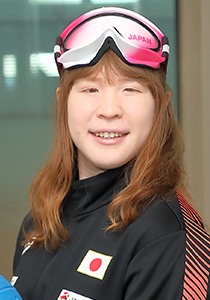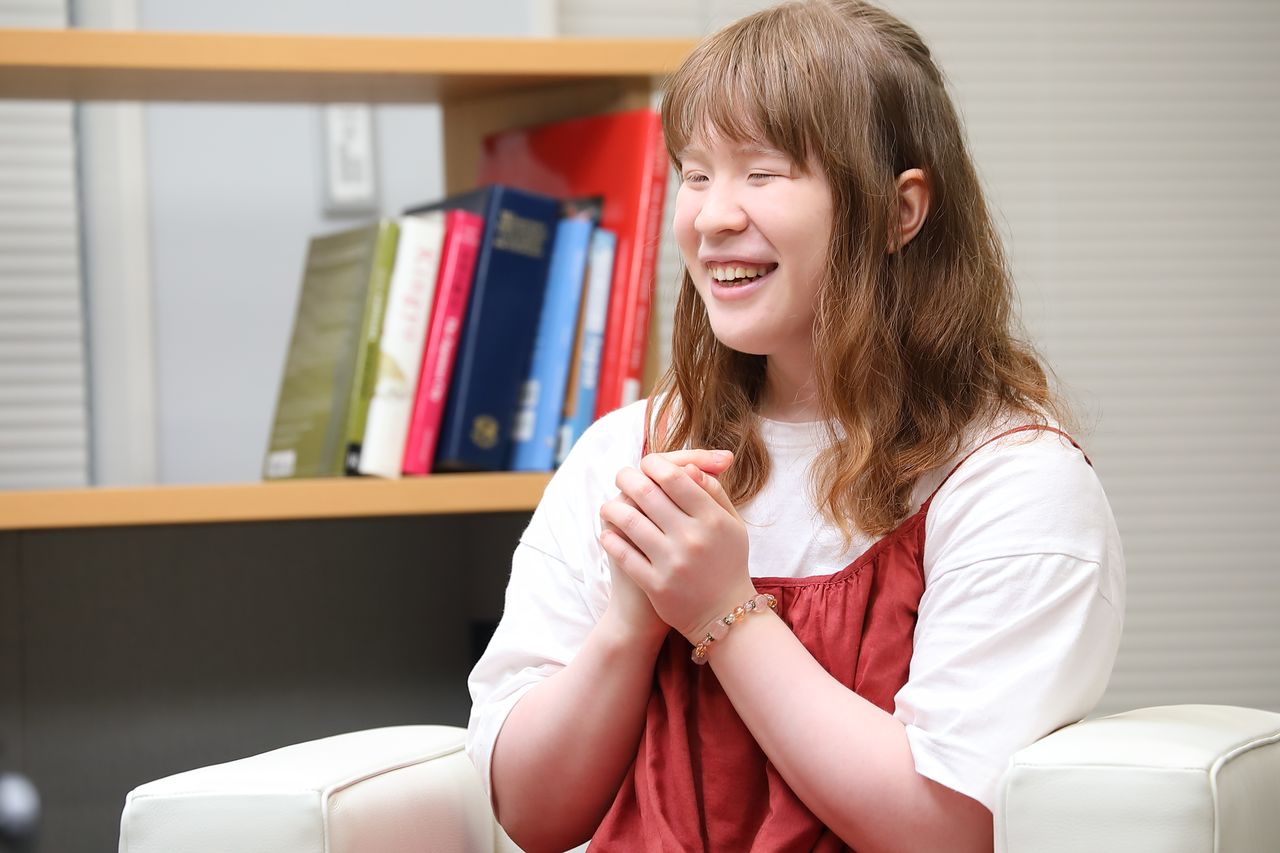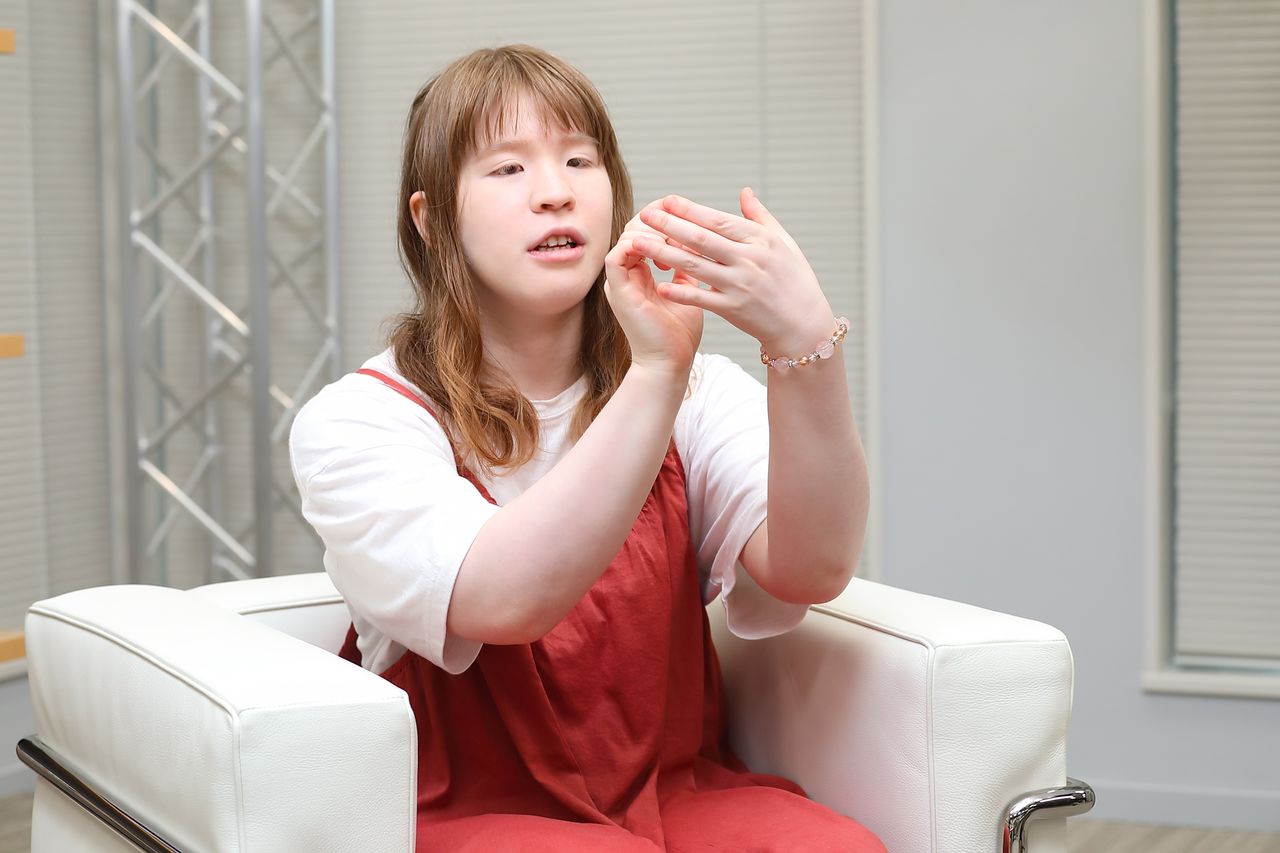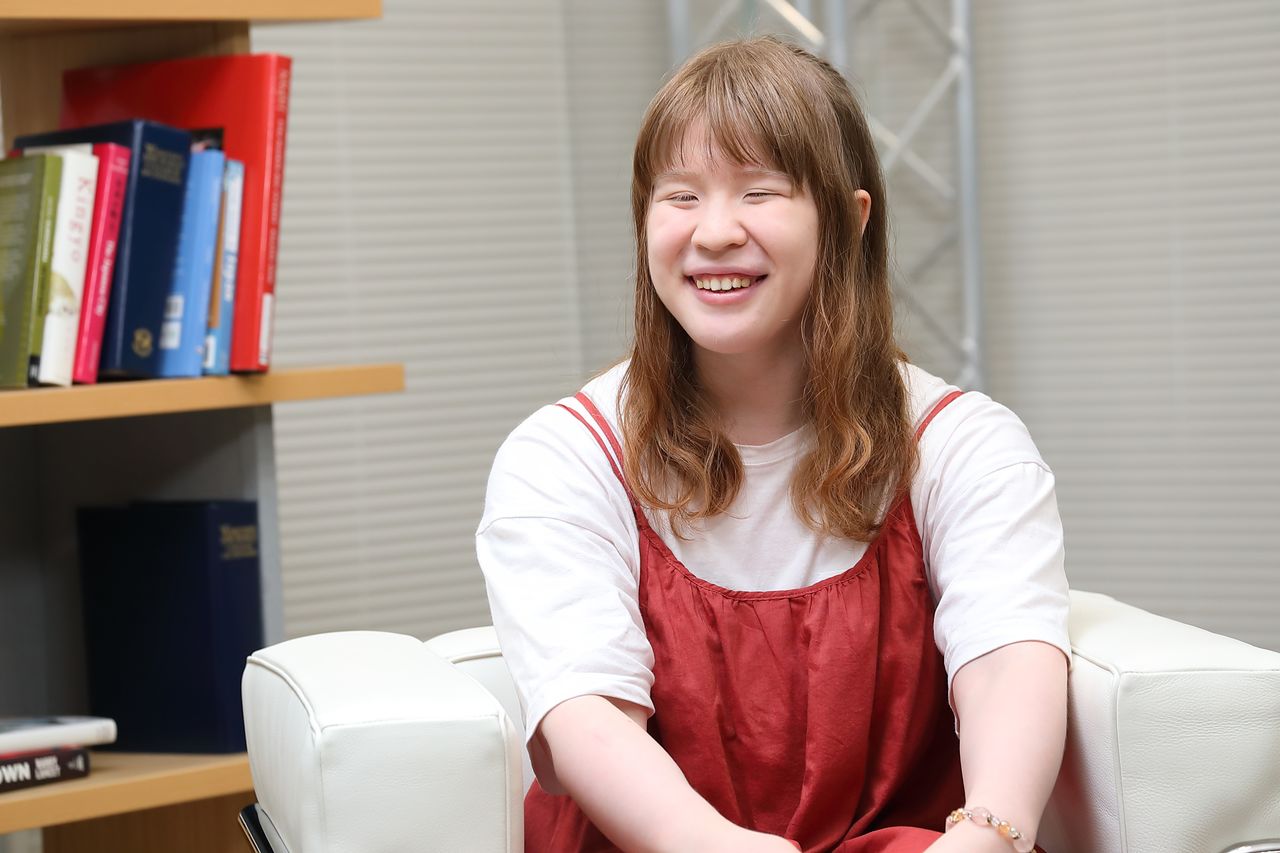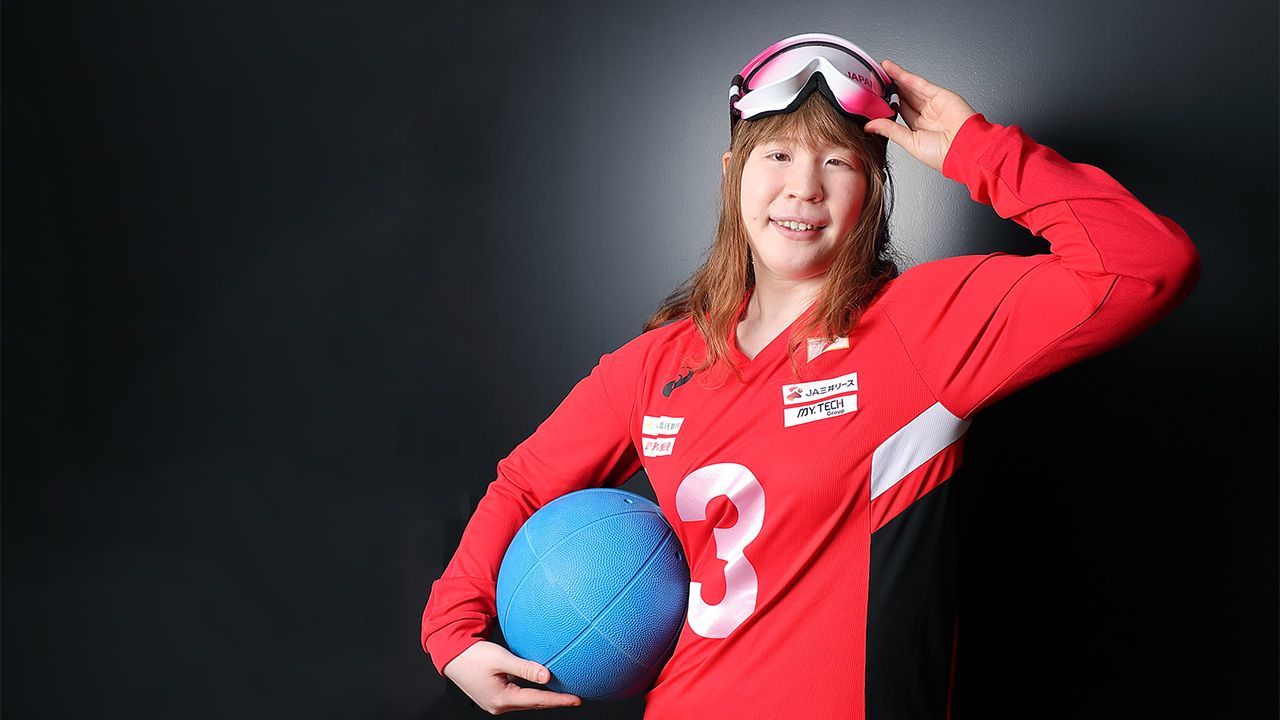
Paralympic Athletes, Up Close and Personal
Goalball 2020: Japanese Throwing Ace Kakehata Eiko
Sports Society Tokyo 2020- English
- 日本語
- 简体字
- 繁體字
- Français
- Español
- العربية
- Русский
Aiming High
The cheerful tone and spirited laughter of goalball player Kakehata Eiko off the court belies the fierce competitor she is when suited up for the Japanese national team. Playing on the left wing, she is known for hurling pinpoint throws that penetrate even the strongest defense.
Her attacking prowess was on display at last year’s Asian Para Games in Indonesia when she scored a hat trick in the gold-medal game against rival China. Using rotation throws, Kakehata’s specialty that involves her spinning full circle before launching the ball, she frustrated the Chinese side and propelled Japan to a 5–3 victory.
Kakehata is pleased with the result, but keeps the win in perspective. Speaking in a serious tone, she insists she is focused on improving her game, particularly her ball control. “I need to polish my throw more if we’re going to beat the top teams in the sport.”
Her cautious manner stems from poor performances at recent overseas competitions. In May, she was part of a Japanese squad that finished second in a combined international training camp and tournament in Turkey. Then in June, her team came in fourth after losing to Russia and Brazil at a similar event in Sweden. Although Japan was still trying out new lineups, with a little over a year to go before the Tokyo Paralympics, Kakehata does not feel she can be complacent. The daughter of a former baseball star—her father Kakehata Mitsunori pitched 12 seasons in Japan’s professional league—the goalballer’s competitiveness runs in the family.
More Than Just Defending
Kakehata has one Paralympic gold and is hungry to add another to her collection. She was part of the women’s team that prevailed at the 2012 London games. However, she admits that being an 18-year-old substitute with barely two years of goalball experience under her belt made it hard to feel part of the historic accomplishment. “I didn’t feel as if I contributed anything to the team,” she laments. “I couldn’t even get into the energetic vibe at the games. When they raised the Japanese flag at the medal ceremony, I just stared blankly from the podium.” In 2020, though, she is determined to be at the center of the action.
Goalball is played by blind or visually impaired athletes. Each side has three players who compete on an 18-by-9-meter court—roughly the same playing area as in volleyball—using a hard rubber ball that contains two bells allowing competitors to hear as the orb moves. Wearing special goggles called eyeshades that completely block vision, players defend their goalmouth and try to score by rolling the 1.25-kilogram ball over the opposing team’s goal line. Games are divided into two 12-minute halves.
Teammates coordinate play and orient themselves on the court using their voices and by feeling boundaries and markings that have string taped underneath. To attack, a player rolls the ball underarm at the opposing team’s goal. There are various throwing techniques, but as a rule a ball must bound at least once in both the landing area in the attacking side’s end and in the 6-meter neutral zone dividing the two sides of the court. To defend, players thrust sideways, stretching out their arms and legs to form a barrier across the goalmouth.
The Japanese women’s national team has earned a reputation for its defensive might. At the London games, the squad shut out a talented Chinese side 1–0 to win gold. However, four years later in Rio de Janeiro it was a different story as Turkey and the United States punched holes in Japan’s defenses with a salvo of bounding throws and fast-rolling low balls called grounders, sending the Japanese team to a disappointing fifth-place finish.
During the 2016 games Kakehata was impressed by up-and-coming star Sevda Altunoluk, a talented Turkish player whose throws she describes as “devastating.” The Brazilian side also gave Japan trouble with their distinct style of attack. “They would run up, spin around, and then launch the ball from between their legs,” Kakehata recalls. “We couldn’t work out how to defend against it.”
After Rio, Japan overhauled its defensive strategy, going from a straight-line approach to a V-shaped formation with the two wingers positioned slightly behind the center. The new tactic gives Japan more flexibility to react to different attacking styles. The team also bolstered its grounder-heavy offense to include rotation throws.
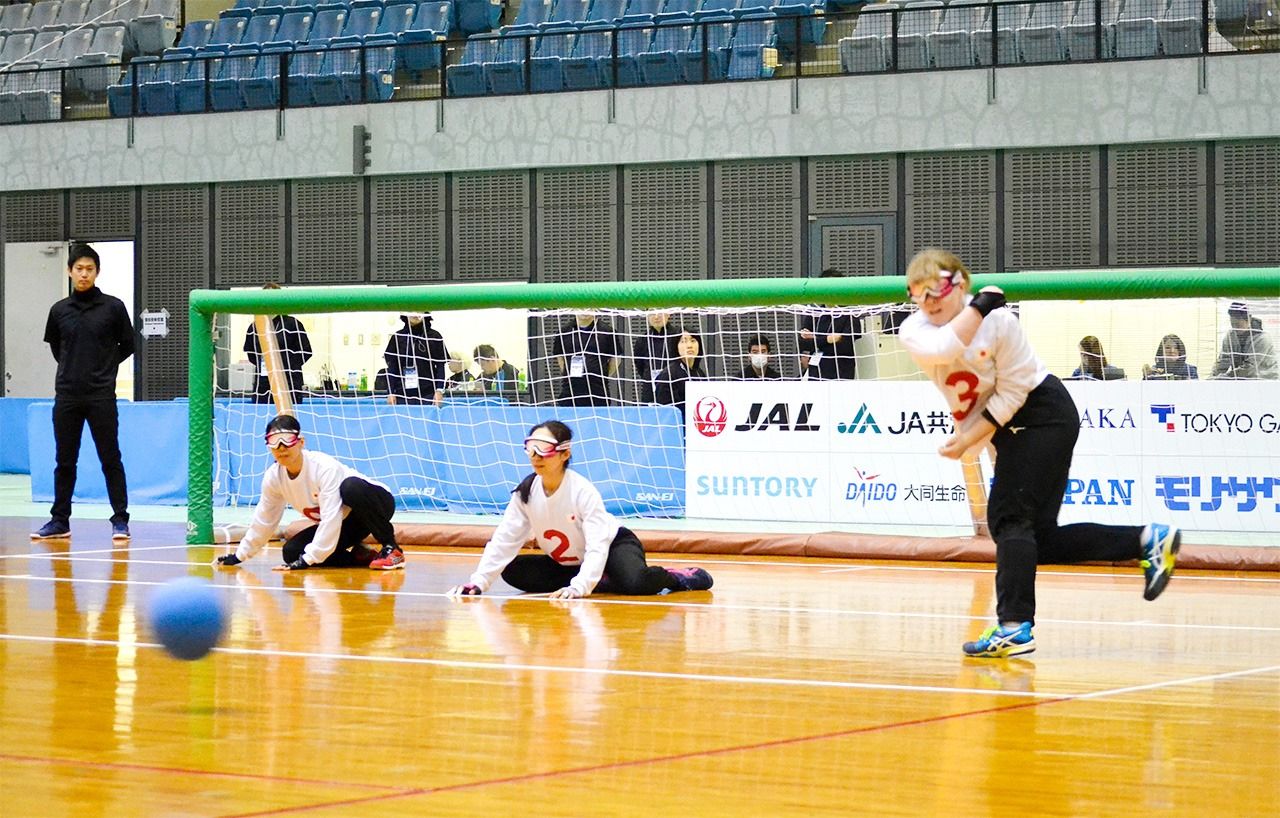
Japan women’s national team players (from left) Komiya Masae, Urata Rie, and Kakehata Eiko during a game at the Japan Para Championships in February 2019. (© Jiji)
Kakehata says the fast-rotating throw provides the team a potent weapon to break down opponent’s defenses. “Whirling around puts spin on the ball and produces centrifugal force that deadens the sound of the bells, giving defenders less time to react “she explains. However, mastering the throw is no easy task. “Each time I misthrow I’m reminded of just how far I have to go to be mentally ready for big matches.”
Goalball Beginnings
Born in Yokohama, Kakehata is the youngest of three children. She describes herself as being an active little girl who loved joining her older brothers and father on jaunts to the park. Although visually impaired, a condition related to her albinism, she did not let her poor eyesight prevent her from rollerblading and joining in games with her siblings.
However, after entering elementary school her interest in sports quickly waned. She attended a local school, and although she longed to join her classmates in games of dodgeball and soccer, she was unable to clearly see the ball and was seldom picked for teams.
Kakehata went to a high school for the blind with the intention of learning acupuncture, a skill often practiced by blind and visually impaired people in Japan. While there, a friend invited her to join a local goalball team. “Playing sports wasn’t even on my radar,” she recalls with a smile. “But once I gave it a whirl I was hooked.”
Kakehata says goalball broadened her horizons and gave her the confidence to follow her own interests. She insists her family was with her “every step of the way,” including supporting her decision to continue her education. After graduating from high school, Kakehata studied textile design at Yokohama University of Art and Design.
Father-Daughter Relations
Kakehata says that since she was a little girl, she has used her hearing and sense of smell more than her vision to orient herself to the surrounding environment. “I normally hear visitors before they ring the doorbell and navigate my neighborhood just by following the different odors,” she explains. This same keen attention to her surroundings also makes her a formidable goalball player.
Although her father was a powerhouse on the mound, Kakehata insists she gained her throwing skills through hard work alone. “My dad’s heyday was behind him by the time I was born,” she says with a chuckle. ”On top of that, my mom had no interest in the sport, so I didn’t learn he was a famous pitcher until I was older. He once tried to give me throwing advice, but his explanation was so bad that I couldn’t figure out what he was going on about and I eventually told him to stop.”
Returning to the topic of the Tokyo Paralympics, Kakehata’s face grows stern. She says her sole focus for the next year will be on honing her rotation throw, exclaiming that “I’m dead set on winning gold.” Judging from her confidence and determination, opposing teams better be on guard.
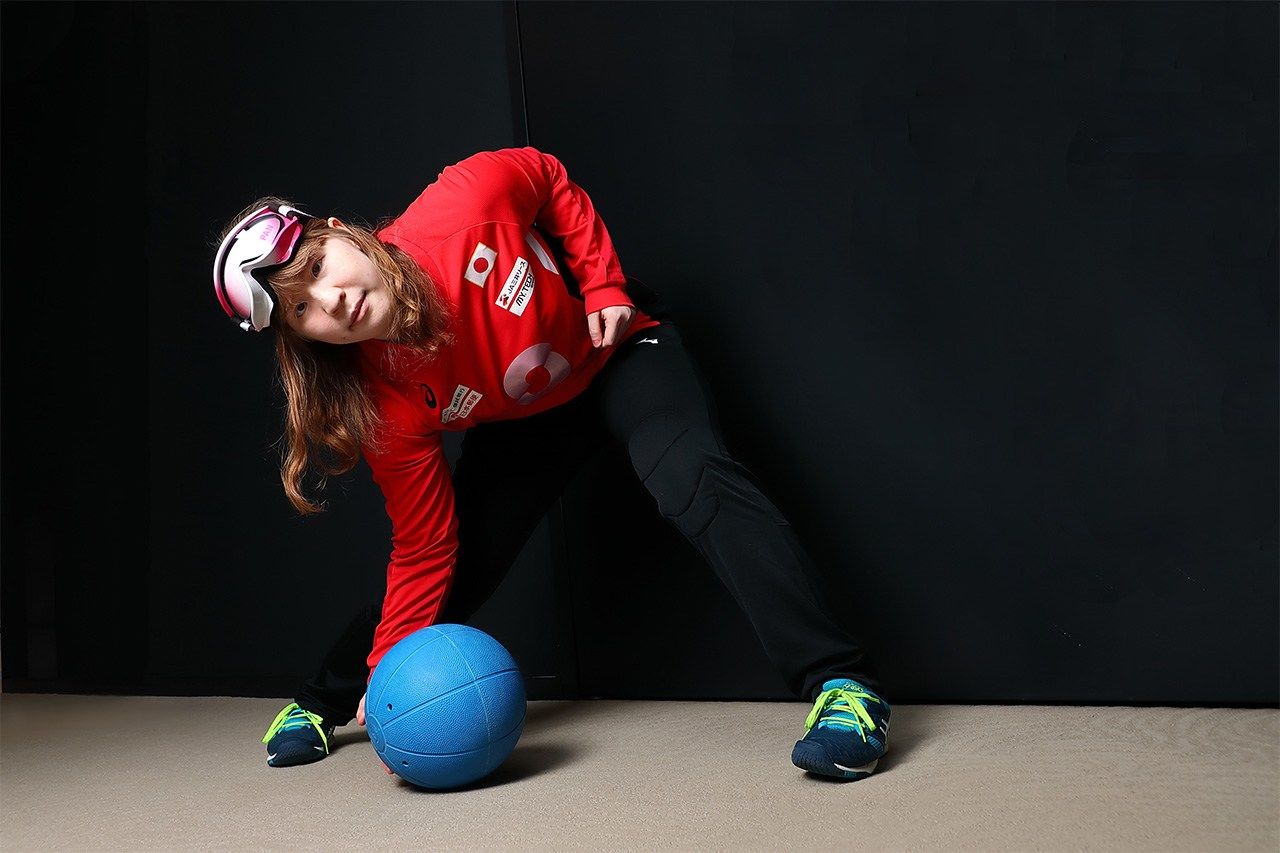
Kakehata says boosting her throwing accuracy is her main focus heading into the Tokyo Paralympic in 2020.
(Originally published in Japanese. Interview photos by Hanai Tomoko.)
